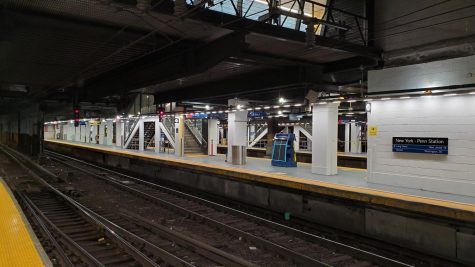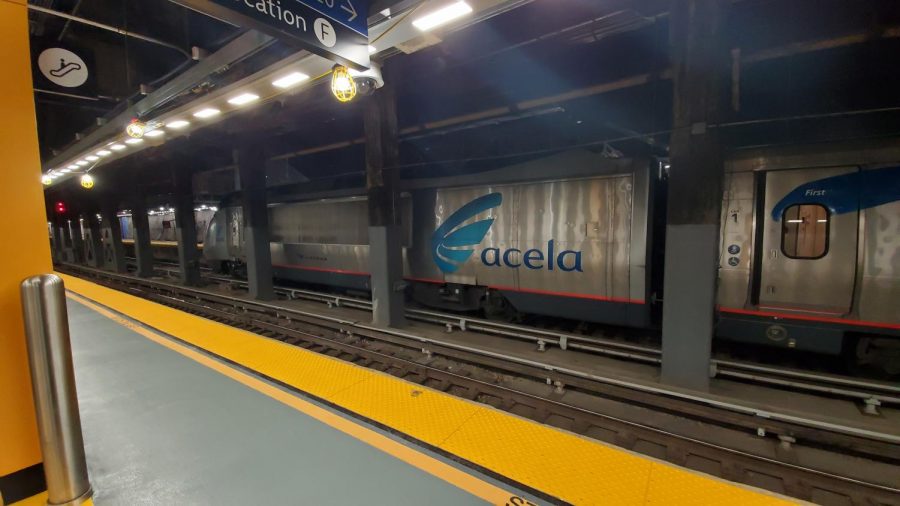Getting Back on Track, a New Future for American Rail
For its 50th anniversary, Amtrak released its ambitious plan to revolutionize rail service in the United States and connect the country with cost-effective and accessible rail service.
Amtrak’s Acela Express has a top speed of 150 miles per hour which will hopefully be reached with improved safety and signals under Amtrak’s new plan.
Praised by Amtrak Joe, traveling by rail is making a comeback in the United States with a twenty-first century twist. To compete with top Eurasian rail services such as the Tokaido Shinkansen bullet train and the luxurious Venice Simplon-Orient-Express, Amtrak has released its Amtrak Connects US plan to expand rail service across America.
The need for new and improved infrastructure was supported by President Biden when his American Jobs Plan went into effect on March 31st, 2021 with a hefty price tag of $2 trillion. His plan allocates over $600 billion towards transportation infrastructure, with $80 billion going towards modernizing existing public transportation and $85 billion towards reliable passenger and freight rail service.
Two days later, Amtrak responded by releasing their Amtrak Connects US plan alongside a new map, which aims to connect underserved communities and serve 20 million more passengers annually while reducing carbon emissions. Over the next 15 years, Amtrak envisions adding up to 30 new routes along with increased service to 20 existing routes. Additional benefits include the reduction of traffic on major roadways, the creation of thousands of jobs, and the advent of more transportation equality for the American people.
President Biden helped celebrate the rail service’s 50th anniversary in late April 2021 by speaking at the Philadelphia Amtrak station in order to garner support for his infrastructure plan. An avid supporter of the rail company, he estimated taking over 8,200 round trips and traveled over 2 million miles including daily rides throughout his 36-year tenure as a United States Senator.

However, this is not the first time that Amtrak has taken on such an ambitious project. Ten years ago, the government-owned corporation received $450 million under the Obama administration in order to improve railway speeds along the Northeast Corridor. At the time, the fastest train in the Western hemisphere, the Acela Express, rarely reached its top speed of 150 miles per hour, averaging only 70 mph between Boston and Washington. On the other hand, modernized rail service in Europe and Asia frequently accelerated to 200 mph.
Critics of the plan claim that the project is too ambitious, requiring a higher population density and more reliance on public transportation in order to be successful. A research associate at San Jose State University, Eric Peterson, suggests that a plan to slowly phase in high-speed rail would be a better fit and would garner more public support. “My preferred alternative is to get the first high-speed rail project in the United States completed and successfully in service,” Peterson said. “Once Americans see and experience high-speed rail in America, they will clamor for it and support it more.”
As previously noted, Amtrak is also devoted to reducing carbon emissions in order to combat climate change, which is crucial when transportation is currently the largest preventable contributor of greenhouse gases. The rail company claims that traveling by Amtrak reduces greenhouse gas emissions by up to 83% compared to driving and up to 73% compared to flying. Not only would improved service lead to less emissions, but it would decrease the average 80 hours that an average American spends in traffic each year.
With new interest in rail, visionaries from a new project called North Atlantic Rail (NAR) are hoping to also receive a share of Biden’s infrastructure funding. Their plan includes expanding connections to smaller, underserved communities throughout the Northeast and New England regions by improving and building upon existing railway infrastructure.
NAR also has a main goal of building a high-speed line between Boston and New York City which would take only 100 minutes, less than half the time of preexisting Amtrak services. Biden’s plan would require a new tunnel under the Long Island Sound connecting New Haven and Ronkonkoma in Long Island, New York. Although a majority of Long Island and Connecticut residents are in favor of such an interstate connection, the tunnel alone could cost upwards of $100 billion to complete.
Amtrak hopes to gain approval for their plan this year in order to begin major infrastructure improvements as soon as possible. Service disruption in the future will likely be noticeable, but hopefully, it will pay off in the form of faster and cheaper commutes that will help to bring us together more quickly and efficiently.
“Once Americans see and experience high-speed rail in America, they will clamor for it and support it more,” said transit expert Eric Peterson.
Russell Kwong is a Copy Chief Editor for 'The Science Survey.' In his second year of journalism, he enjoys reading 'The New York Times' online to learn...











